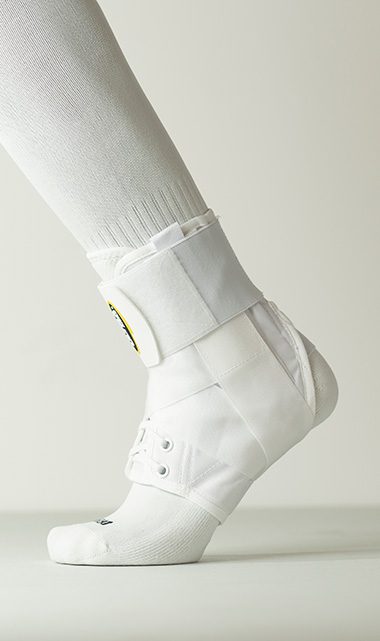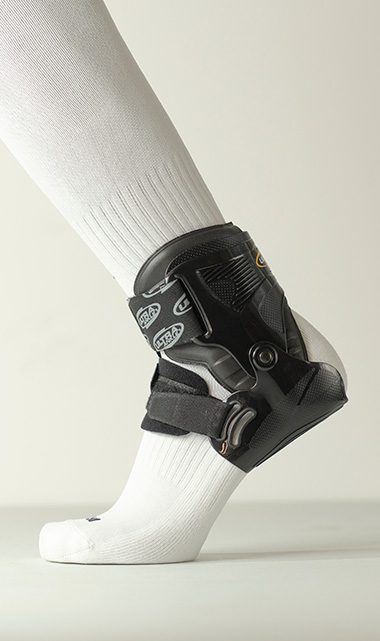Walker or walk-on, starter or star, ankle injuries threaten everyone.
While no injury prevention method is 100% guaranteed, there are some steps you can take to help prevent or reduce the severity of an ankle injury if one were to occur. The most common way to help prevent an ankle injury is by wearing a preventative ankle brace that is comfortable enough to wear every practice and game but durable enough to last for multiple seasons.
When it comes to many sports, most athletes won’t regularly wear an ankle brace until they get hurt or begin to experience ankle instability from years of repeat injuries. You’re more likely to sprain your ankle when you’re walking on uneven terrain or do a sport that is characterized by running, cutting movements, and jumping, such as basketball, football, tennis, and volleyball. The research also shows that your risk of injuring your ankle once more is much higher when you’ve had a previous ankle sprain. Using an ankle brace can significantly reduce your risk of both first-time and recurring ankle sprains, especially when doing sports. It does this by preventing extreme ankle movements. Or, in other words, it stops the ankle from moving far enough to cause the ligaments, muscles, or joint to strain (SP).
Whether you are hoping to stop an ankle injury from happening at work or during a game , there are a few things you need to know before choosing a preventative ankle brace.
- Stay away from braces that don’t allow your ankle to move at all; the same goes for plaster casts (unless you have a fracture). As mentioned before, in most cases total immobilization leads to poorer healing (SP).
- Any ankle brace that is wrapped around the joint, pulled tight, and makes it difficult for you to move your ankle up and down may not provide the sufficient support to help prevent ankle injuries. Up and down motions do not cause injuries or need to be restricted. Additionally, soft ankle braces or sleeves are not useful, as they don’t provide enough support.
- If you’re not able to move your ankle naturally without restriction in an ankle brace then you are inhibiting your performance and not strengthening your muscles as well as you could be. Your joint’s natural range of motion should never be restricted by an ankle brace. Invest in hinged ankle brace that will allow the natural range of motion and keep your muscles strong.
- Make sure to choose a brace that provides enough support to last through a practice, game, or your entire work day. Fabric wrap around and lace-up style ankle braces restrict the ankles natural range of motion so they loose support rapidly with most support being lost in the first 30 minutes of use. Hinged ankle brace move with the ankles natural range of motion so the straps stay securely in place maintaining continuous ankle support for hours.
Traditionally hinged ankle braces are constructed from stiff rigid plastic that many players find too uncomfortable to wear for extended periods of time, too big/bulky to fit in their shoes, and unreliable, constantly cracking and breaking. Ultra Ankle braces are made entirely of a new type of thermoplastic that is flexible enough to provide all day comfort while still being strong enough to help prevent any excessive movement that’s going to cause an ankle injury. With Ultra Ankle’s hinged-cuff braces, you’re able to stop worrying about injuring your ankle so that you can focus on what matters most: living life without limits.



